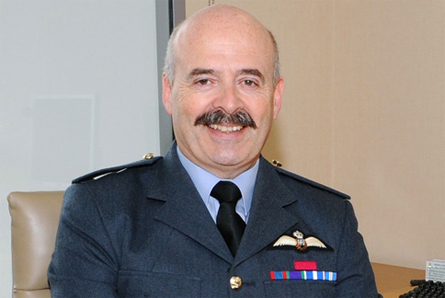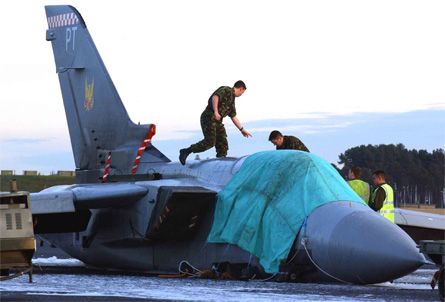This September will bring the fifth anniversary of one of the darkest moments in the modern history of the UK Royal Air Force, when 14 servicemen lost their lives as a British Aerospace Nimrod MR2 surveillance aircraft exploded in mid-air over Afghanistan.
Charles Haddon-Cave QC's damning inquiry into the loss of aircraft XV230 exposed critical design flaws with the Nimrod, and slammed the Ministry of Defence's "leadership, culture and priorities" with regard to aircraft safety. Among his key recommendations were that an independent organisation should be formed to prevent such an incident from happening again.
Now, nine months away from achieving full operational capability, the resulting UK Military Aviation Authority (MAA) has already made great strides, according to its director general, Air Marshal Timo Anderson.
"We've made a flying start," he said. "What we've done in the past 12 months would historically probably have taken about 18 to 24 months' work."
 |
|---|
© Craig Hoyle/Flightglobal |
The MAA was formed following the Haddon-Cave report into a Nimrod MR2 crash in Afghanistan |
Within six weeks of its formation, in April 2010, the MAA had delivered its first guidance to aviation "duty holders" about the legal accountability of their actions. A major organisational departure from the earlier construct, the new legal chain of responsibility runs down from the three armed-service chiefs through six other senior officers, then down to station and equipment-force commanders.
The first specialist training course for duty holders was held at the MoD's defence academy in Shrivenham, Wiltshire, in May, at a time when the UK had aircraft involved in combat operations over Afghanistan and Libya.
Around the same time, the MAA also issued new guidance to distinguish the boundaries between what it classifies as 'operating' and 'operational' risk. The former covers factors such as the airworthiness and maintenance of an aircraft and the appropriate training of its crew, while the latter refers to command decisions made about the method of their employment when deployed in operational theatres.
"The duty holders are still responsible for managing day-to-day operating risk, but that doesn't remove from the operational command chain the freedom to say 'I'm going to operate these capabilities in a way which you would normally not, because I need to'," Anderson explained. "There must be a suitably informed discussion at that point about the level of risk and what's tolerable, but in the ultimate extreme the commander in the field can still say 'no, I'm going to do it this way'."
One such example came when two of the RAF's Lockheed Martin C-130J tactical transports were used to extract civilians from deep inside Libya earlier this year: a commitment that resulted in one of the aircraft being struck by small arms fire. The subsequent actions of the crew and command chain were different to what might have been expected in the UK, but were deemed justifiable given the hostile operating environment.
While the MAA does not get involved in the process of approving such operational missions, or wish to do so, it has the authority to "express a view", should this be required.
 |
|---|
© Crown Copyright |
Air Marshal Timo Anderson has led the MAA through its 'flying start' |
Airworthiness decisions concerning legacy systems pose more of a challenge to the MAA than its responsibilities during the certification of new equipment.
"The area where it's more difficult is in the continuing airworthiness of systems that are already in place and have been for maybe 20 or 30 years," Anderson said. "It's making sure that those who are responsible are continuing to ask themselves questions, and that they never assume that because nothing's happened, nothing's going to happen."
Such considerations were made ahead of a decision to extend operations of the RAF's last Nimrod R1 electronic intelligence aircraft, which enabled the type to support the NATO-run campaign in Libya before its retirement in late June.
MAA personnel are involved in military-themed certification activities linked to the RAF's new Airbus Military A330 "Voyager" tanker/transport (below), which is due to receive its release to service approval in October.
 |
|---|
© Qinetiq |
With civilian approval having come from the European Aviation Safety Agency, Anderson said the basic certification of the A330 is unlikely to be problematic. However, he cautioned: "We have a deep responsibility to those who are flying and operating aircraft today, and to the memory of the 14 that died in XV230 to do the right thing. If something's not right, it's not going to get a tick."
The MAA has also established a Military Air Accident Investigation Branch (MAAIB) to investigate the technical issues behind crashes. This started operations in April, and is collocated with its civilian equivalent in Farnborough, Hampshire.
New methods used during an investigation into an incident in Afghanistan late last year led to a report being prepared within six months; roughly 25% of the time taken by previous service inquiries. The MAA then distributed a classified executive summary of its findings to operators of the aircraft involved. "The whole point of a service inquiry is to prevent recurrence," Anderson said. "You can't do that if you're keeping the findings and recommendations to yourself for two years."
 |
|---|
© Malcolm Clarke/Daily Mail/Rex Features |
The UK's new MAAIB will investigate future military accidents |
Around 170 of the authority's expected 200 full-time staff have been recruited so far, with the team in the process of relocating to the MoD's Abbey Wood north site near Bristol. A new set of regulations, which will replace previous multiple documents, will be formally enacted on 1 August, following a rewriting activity supported by the NiteWorks organisation. "We've merged the industry piece and the military piece into one, with one set of regulations for everybody," Anderson said.
"One of the tasks we set ourselves right at the beginning was not just to write regulations and tick off Haddon-Cave's recommendations, but to take all of the resource that had been bundled together and turn it into more than just a collection of bits. Come February or March of next year, those who come to see the MAA will see a truly integrated entity of modern design and modern practices."
Get more aviation safety coverage from Flightglobal
Source: Flight International
















